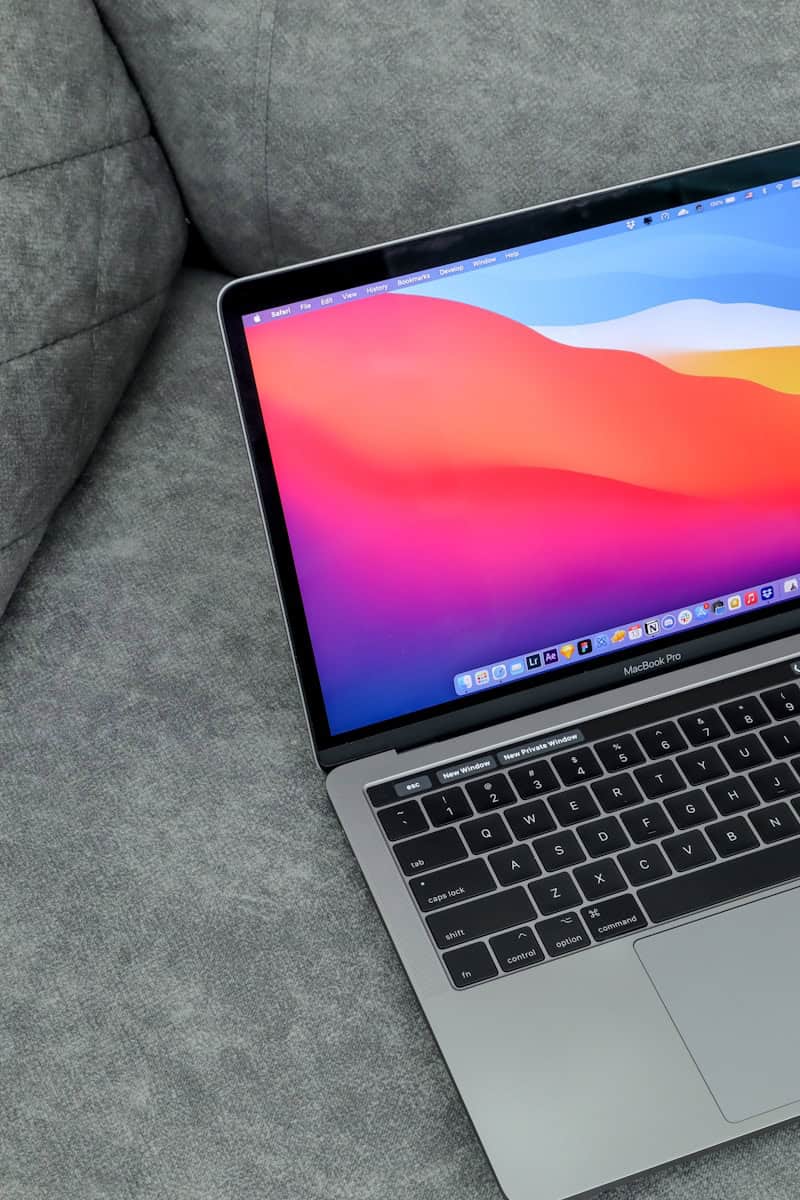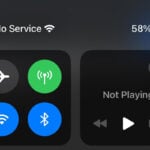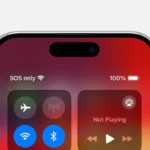Is your MacBook Pro screen acting up with annoying flickers? This common issue can make your laptop almost impossible to use, but don’t worry. Most MacBook Pro screen flickering problems can be fixed with simple troubleshooting steps without requiring expensive repairs. From software glitches to hardware concerns, there are several potential causes and solutions.
The flickering might show up as quick flashes, color changes, or screen shaking. It often happens when certain apps are open or when your laptop gets hot. Many users have fixed their flickering issues with basic steps like restarting their computer or updating macOS.
Before rushing to an Apple Store, try some DIY fixes. Sometimes the solution is as easy as adjusting display settings or checking for loose connections. In other cases, you might need to reset specialized system settings like NVRAM or SMC that affect how your display works.
Screen flickering on a MacBook Pro can be caused by software glitches, incompatible apps, or even hardware issues like GPU faults. Here’s a full troubleshooting guide to help you fix it:
1. Reboot Your MacBook
- Sometimes a simple restart can flush out temporary software bugs.
- Click the Apple menu → Restart.
2. Reset PRAM/NVRAM
This can fix display-related bugs.
- Shut down your Mac.
- Turn it on and immediately hold:
Option + Command + P + R - Keep holding the keys for about 20 seconds.
- Let go once you hear the startup chime (or see the Apple logo appear and disappear a second time).
3. Reset the SMC (System Management Controller)
SMC controls things like display and battery hardware.
For MacBooks with Intel chips:
- Shut down your Mac.
- Hold:
Shift + Control + Optionon the left side and power button at the same time. - Hold for 10 seconds, then release.
- Turn your MacBook on.
Apple Silicon Macs (M1/M2/M3): No SMC reset needed. Just restart your Mac.
4. Boot into Safe Mode
This isolates third-party extensions that might be causing the issue.
- Intel Macs: Hold
Shiftimmediately after pressing power. - Apple Silicon Macs: Hold the power button until “Options” shows → Select your drive → Hold
Shiftand click Continue in Safe Mode.
If the flickering stops in Safe Mode, it’s likely a software or extension issue.
5. Disable Automatic Graphics Switching
Some MacBook Pros with dual GPUs switch between integrated and discrete graphics—this can cause flickering.
- Go to: System Settings → Battery → Options (or Energy Saver on older macOS)
- Turn off: Automatic graphics switching
6. Update macOS and Apps
- Go to: System Settings → General → Software Update
- Install the latest macOS version.
- Update all apps via the App Store, especially if screen flickering happens when a specific app is open (e.g., Chrome, Photoshop).
7. Turn Off True Tone and Night Shift
- System Settings → Displays
- Disable True Tone
- Also check Night Shift settings to see if disabling it helps.
8. Run Apple Diagnostics
To rule out hardware problems:
- Shut down your Mac.
- Turn it on and hold the D key until diagnostics begin.
- Follow on-screen instructions.
9. Test External Monitor (If Available)
- Connect your Mac to an external display.
- If the external display doesn’t flicker, the issue is likely with your MacBook’s display panel.
- If it does flicker, the problem may be the GPU or macOS itself.
10. Contact Apple Support
If none of the above work, it could be a failing display, GPU, or logic board—especially in older Intel MacBook Pros known for GPU issues (like the 2015–2017 models).
Key Takeaways
- A simple restart or macOS update can fix most screen flickering problems on MacBook Pros.
- Screen flickering may signal software issues or hardware problems like damaged display cables.
- Run Apple Diagnostics and adjust graphics settings before seeking professional repairs.
Understanding Screen Flickering in MacBook Pro
Screen flickering on MacBook Pro devices can be frustrating and disruptive to your work. Most flickering issues stem from either software glitches or hardware problems that affect how the display functions.
Identifying the Flickering Issue
MacBook Pro screen flickering can appear in several ways. You might notice horizontal black or red bands flashing at the bottom of your screen, similar to what some users have reported with 2019 models. Other common signs include:
- Quick flashes or blinking across the entire screen
- Intermittent blackouts lasting a few seconds
- Color distortion or strange patterns appearing
- Flickering that worsens when adjusting brightness
These symptoms often happen more when you first open your MacBook. They might become less frequent as your computer warms up.
To properly identify the issue, note when the flickering happens. Does it occur during specific apps? After waking from sleep? Or is it constant no matter what you’re doing?
Differences Between MacBook Pro and MacBook Air
Though both lines suffer from screen flickering, MacBook Pro and Air models show some key differences in how these issues present. MacBook Pro devices, with their higher-end displays, often show more noticeable flickering due to complex graphics processing.
MacBook Air models, particularly the M1 versions, may show specific flickering issues that differ from Pro models. The Air’s thinner design and different internal components can lead to unique display problems.
Pro models with Touch Bar may experience flickering related to this feature. The larger Pro screens might show more obvious banding or partial flickering rather than whole-screen issues.
Both models can have software-related flickering, but Pro models with dedicated graphics cards face additional potential hardware causes.
Common Causes of Screen Flickering
Several factors can make your MacBook screen flicker. Software issues are often the culprit and are easier to fix. These include:
- Outdated macOS versions missing critical display fixes
- App conflicts, especially with graphics-intensive programs
- Incorrect display settings or resolution
- Background processes using excessive GPU resources
Hardware problems tend to be more serious. These might include:
- Loose or damaged display cables
- Failing graphics processors
- Overheating components affecting display performance
- Physical damage to the screen or its connectors
Energy settings can also trigger flickering. When your MacBook switches between integrated and dedicated graphics to save battery, screen glitches might appear. This is more common in Pro models with dual graphics systems.
Understanding the root cause helps you find the right solution to fix your flickering screen.
Troubleshooting Basic Software Issues
Screen flickering on your MacBook Pro often stems from software issues that can be fixed without technical expertise. Many users find relief through simple software adjustments before resorting to expensive hardware repairs.
Checking for macOS Updates
Outdated operating systems frequently cause screen flickering problems. To check for updates:
- Click the Apple menu in the top-left corner
- Select “System Preferences” (or “System Settings” in newer versions)
- Click “Software Update”
- Install any available updates
MacOS updates often include fixes for screen flickering issues and display-related bugs. Apple regularly addresses these problems in their system updates.
If your MacBook still flickers after updating, try restarting in Safe Mode. This helps determine if the issue is system-related.
To enter Safe Mode on Intel Macs, hold the Shift key during startup. For M1/M2 Macs, shut down the computer, hold the power button until startup options appear, select your startup disk, then press Shift while clicking “Continue in Safe Mode.”
Dealing with Third-Party Software Conflicts
Third-party applications often conflict with your MacBook’s display drivers. Graphics-intensive programs are especially common culprits behind screen flickering.
Try disabling automatic graphics switching which can help stop flickering:
- Go to System Preferences
- Select “Battery” or “Energy Saver”
- Uncheck “Automatic graphics switching“
- Restart your MacBook
Some users find that turning off Dark Mode resolves flickering issues. This setting sometimes conflicts with certain applications.
Check activity monitor for resource-hungry apps. Close applications one by one to identify which program might be causing the display to flicker. Web browsers with many open tabs or extensions often trigger screen glitches.
Adjusting Display Settings
Fixing screen flickering issues on your MacBook Pro often starts with the right display settings. Making a few key adjustments can quickly solve the problem without needing technical help.
Turning Off True Tone
True Tone technology adjusts your screen’s white balance based on ambient light, but it can sometimes cause flickering. To disable this feature:
- Click the Apple logo in the top-left corner
- Select “System Preferences” (or “System Settings” in newer macOS)
- Click on “Displays”
- Uncheck the “True Tone” box
Many users report that turning off True Tone immediately fixes flickering issues. This setting changes how your screen adapts to different lighting conditions. Your display colors might look slightly different afterward, but the stability improvement is worth it.
Try using your MacBook for a few hours after making this change to see if the flickering stops.
Switching Off Automatic Graphics Switching
MacBook Pros with dual graphics cards sometimes flicker when switching between them. Disabling this feature can help:
- Go to Apple menu > System Preferences
- Select “Battery” (or “Energy Saver” in older versions)
- Uncheck “Automatic Graphics Switching”
This setting forces your MacBook to use the high-performance graphics card all the time. While this may use more battery power, it often eliminates screen flickering.
The trade-off is slightly reduced battery life, but the stable display is usually more important for most users.
Configuring Dark Mode Appropriately
Dark Mode can sometimes trigger screen flickering, especially when apps switch between light and dark interfaces. To adjust:
- Open System Preferences from the Apple menu
- Click on “General”
- Select “Light” mode instead of “Dark” or “Auto”
If you prefer Dark Mode, you can also try changing your color profile. Some users find that changing the color profile to Adobe RGB or Display P3 helps prevent flickering while using Dark Mode.
For external monitors that flicker, try setting the refresh rate to 60Hz through the Display settings. This often provides the most stable experience when using extended displays.
Hardware-Related Solutions
Screen flickering on MacBook Pro laptops often stems from hardware issues that need physical fixes. These solutions focus on resetting internal components and testing with external devices to pinpoint the exact problem.
Resetting NVRAM/PRAM
NVRAM (Non-Volatile Random-Access Memory) stores certain settings on your Mac. When these settings become corrupted, screen flickering may occur.
To reset NVRAM on your MacBook Pro:
- Shut down your MacBook completely
- Turn it on and immediately press and hold Command + Option + P + R
- Hold these keys for about 20 seconds
- Release when you hear the startup sound twice or see the Apple logo appear and disappear twice
This process clears settings like display resolution and refresh rate that might cause flickering. Many users report this simple fix works when software solutions fail.
After resetting, check if the flickering stops. If it continues, the problem likely lies elsewhere.
Resetting the System Management Controller (SMC)
The SMC controls many hardware functions in your MacBook, including power management and display behavior. Faulty SMC settings can cause screen flickering issues.
For MacBooks with T2 security chip (2018 and later):
- Shut down your MacBook
- Press and hold Control + Option + Shift (right side) for 7 seconds
- While holding these keys, press and hold the Power button
- Hold all four keys for another 7 seconds
- Release all keys, then turn on your MacBook
For older MacBooks with removable batteries, the process differs slightly. Resetting the SMC often fixes power-related display issues.
Using External Monitor to Isolate Issues
Connecting to an external display helps determine if the problem is with your MacBook’s screen or graphics system.
To test with an external monitor:
- Connect your MacBook to an external display using appropriate cables
- If the external monitor works fine, your MacBook’s internal screen might be faulty
- If the flickering continues on the external display, it’s likely a graphics card issue
Try different connection types if available. DisplayPort connections sometimes have fewer issues than HDMI. Also, test with different cables as damaged cables can cause intermittent display problems.
If the external monitor test confirms hardware failure, contact Apple Support or visit an Apple Store for professional diagnosis and repair.
Diagnostic Tools and Professional Support
When your MacBook Pro screen starts flickering, you might need specialized tools and expert help to solve the problem. These resources can identify hardware issues that simple fixes can’t resolve.
Running Apple Diagnostics
Apple Diagnostics is a built-in tool that can help find hardware problems on your MacBook Pro. To run Apple Diagnostics, first shut down your MacBook completely.
Next, press the power button and immediately hold down the D key until the diagnostics screen appears. On newer Macs with Apple silicon, restart while holding the power button until the startup options appear, then press Command-D.
The test takes just a few minutes to complete. If it finds any problems related to your display, it will show an error code and description. Write down any error codes that appear.
These codes help identify specific hardware issues that might cause screen flickering. Common display-related codes start with “NDL” or “VDC” and point to graphics card or display connection problems.
Contacting Apple Support or Authorized Service Providers
When diagnostics confirm a hardware issue or when simple fixes don’t work, it’s time to get professional help. Apple Support offers several ways to get help with screen flickering problems.
Contact options include:
- Online support through apple.com/support
- Phone support
- Apple Support app
- Genius Bar appointments at Apple Stores
For in-person service, schedule an appointment at an Apple Authorized Service Provider or Apple Store. Bring your device and any error codes from diagnostics.
Before your appointment, back up your data using Time Machine. If your MacBook is under warranty or AppleCare, repairs for hardware issues might be covered at no cost.
Technicians have special tools and parts to fix screen flickering that can’t be fixed at home. They can replace cables, display assemblies, or logic boards if needed.
Frequently Asked Questions
MacBook Pro screen flickering problems can be frustrating but many common issues have straightforward solutions. Users often encounter specific triggers and conditions that cause screen flickering.
What could be causing the flickering lines on my MacBook Pro screen?
Several factors may trigger flickering lines on a MacBook Pro display. Hardware issues like loose display cables or damaged GPU components are common culprits.
Software conflicts between apps and macOS can also create screen flickering. Sometimes the issue appears after a recent system update.
External factors like connecting to certain displays or using specific brightness settings might trigger the problem as well.
Is it possible to repair a MacBook Pro screen that flickers or has gone black?
Yes, many flickering MacBook Pro screens can be fixed. Simple solutions include restarting your MacBook or resetting the NVRAM or SMC.
For hardware problems like loose connections or damaged displays, professional repair services can often fix the issue. Apple Stores and authorized repair centers have the tools to diagnose and repair these problems.
Even screens that have gone completely black can sometimes be restored through hardware repairs or component replacement.
What are the potential costs involved in fixing a flickering MacBook screen?
Cost varies widely based on the underlying cause. Software-related fixes like system resets or updates are free but require time.
For hardware repairs, expect to pay $300-$700 for screen replacement if out of warranty. Display cable repairs typically cost $100-$200 at third-party repair shops.
If covered by AppleCare+, many repairs might be free or have a small service fee. Complex logic board issues that cause flickering can cost $500-$1,200 to fix.
How can water damage contribute to MacBook screen flickering issues?
Water damage often causes screen flickering by creating short circuits in the display components. Even small amounts of liquid can corrode internal connections over time.
The flickering may start intermittently and worsen as corrosion spreads. Water damage typically affects both the display cable connections and the logic board.
Quick professional service is crucial after water exposure. Technicians can clean affected components and prevent further damage before permanent corrosion sets in.
Are there self-service steps I can take to resolve flickering on my MacBook Pro screen?
Several DIY fixes exist for screen flickering. Restart your MacBook as a first step, as this often resolves temporary glitches.
Try disabling automatic graphics switching in System Preferences. Updating macOS to the latest version can fix software-related flickering issues.
You can also boot into Safe Mode to check if third-party software is causing the problem. If these steps don’t work, professional assistance may be needed.
What should I do if my MacBook Pro screen starts flickering when using full screen mode?
First, exit full screen mode and check if the problem persists. Some apps have compatibility issues that trigger flickering only in full screen.
Try adjusting display settings or disabling display color profiles that might be causing conflicts. Updating both macOS and the problematic application often solves this specific issue.
If the problem continues, try using the app in windowed mode instead of full screen while waiting for software updates to fix the compatibility problem.







